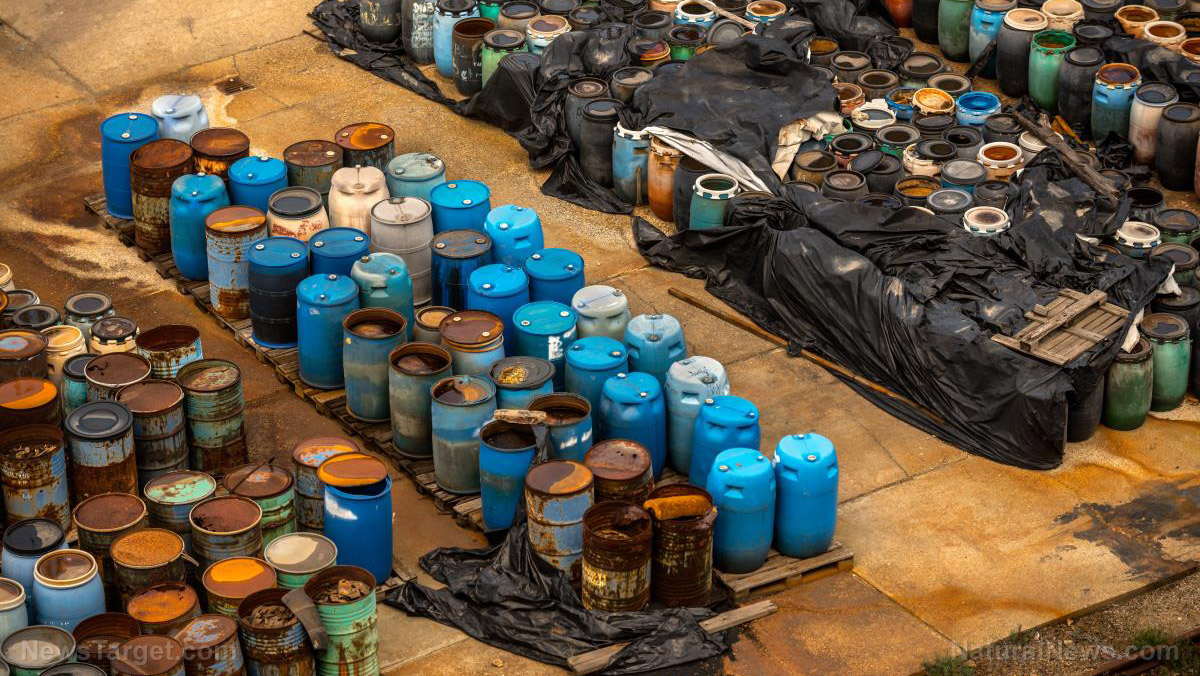The U.S. hasn’t learned its lessons from the toxic mining of uranium
03/16/2018 / By Edsel Cook

As the U.S. moves closer towards increasing domestic mining operations of uranium, an EcoWatch article warned that bitter lessons about unreliable regulation and volatile economic patterns will be forgotten. Inevitably, the public will end up paying for the profits of the uranium industry.
In the past, the U.S. mined and milled radioactive uranium within its borders. Those domestic operations left lasting scars on local communities in the form of abandoned mines, radioactive contamination, and health issues linked to uranium exposure.
Throughout the Cold War, the U.S. Public Health Service was aware of uranium’s potentially deadly effects on human health, yet uranium mining regulations proved wholly inadequate and were rarely implemented.
Modern-day regulations are not much better off. They’re not uniform and enforcement powers are divvied up between multiple agencies.
For example, the Nuclear Regulatory Commission started an Agreement States program in the 1970s. Signatory states were expected to regulate uranium mining, nuclear production, and waste storage by themselves with minimal federal guidance.
While 37 states have joined this uranium management program, many of them lack the budget, staff, and even the will to enforce regulations on the state level.
Some of these states, like Colorado, are relying on the uranium energy companies to police themselves. Others like Utah can’t stay on top of problems regarding permits, contaminated water, environmental degradation, and native American rights. (Related: Mysterious radioactive material enriched with uranium found over Alaska; scientists scramble to determine origin.)

Uranium hurts poor, isolated, ethnically-marginalized Americans
Southwestern states have suffered the worst of uranium’s negative effects. The hardest-hit communities also happen to be some of the poorest, most remote, and ethnically-marginalized peoples in the U.S.
At least 500 abandoned uranium mines are located on tribal lands owned by the Navajo Nation. This concentration of radioactive sites led to cancer clusters, irradiated water, and other negative consequences for the Diné (Navajo) people.
According to a 2015 study, uranium contaminated around 85 percent of homes owned by the Diné. Tribe members who dwell near the closed-down mines have more uranium in their bones than everyone else in the U.S.
So, the recent decision to reduce the Bears Ears National Monument did not sit well with the Diné. The reduction was championed by mining companies who want access to fossil fuel and uranium deposits in the protected area.
Then there’s Monticello, the former site of a World War Two-era uranium mill. Ignorant of the danger of radioactive materials, locals used radioactive tailings from the mill to build their homes.
The mill closed in 1960 and the two Superfund sites were were finally cleaned up during the 1990s. But the federal government ignored compensation claims from Monticello residents who suffered uranium-related health abnormalities for decades.
Native Americans in the Grand Canyon are also fighting corporations over water access. Uranium mining requires large amounts of water normally used by the Havasupai and other regional tribes for drinking supplies.
Uranium is a boom-and-bust commodity
The history of uranium mining is a volatile one. There have been three major booms so far, with the first one drawing to a close due to oversupply and the later ones ending because of nuclear power plant accidents like Three Mile Island, Chernobyl, and Fukushima.
Each cycle overwhelms affected communities, first by flooding them with massive amounts of economic growth before pulling the rug out from beneath them as the market goes bust.
Energy Fuels, Inc. and other companies promise that new production will be able to sustain economic growth. They also argue that their new uranium mills are environmentally-friendly.
However, the uranium industry’s previous record and the current weak regulation suggest that history will repeat itself, possibly with another Fukushima-level disaster.
For more uranium-related news news, visit Nuclear.news.
Sources include:
Submit a correction >>
Tagged Under:
This article may contain statements that reflect the opinion of the author





















